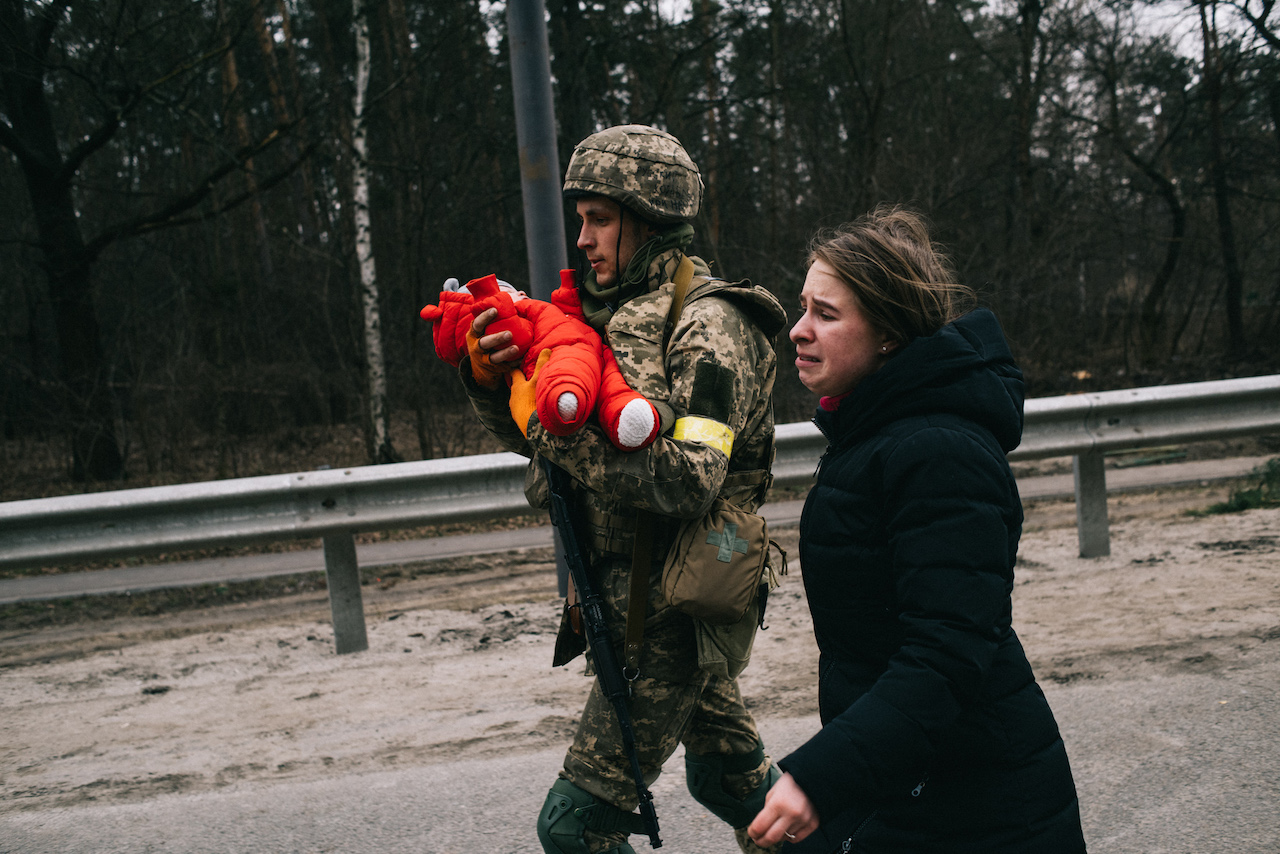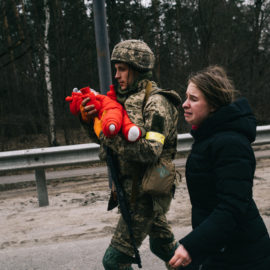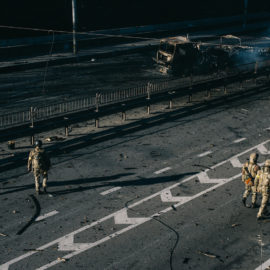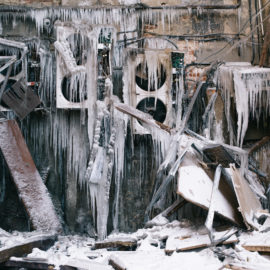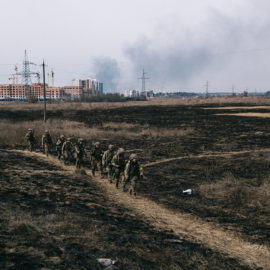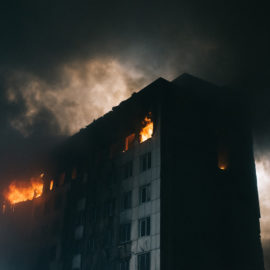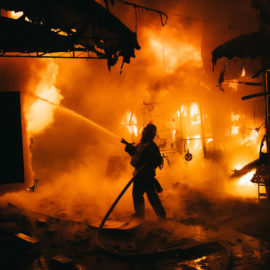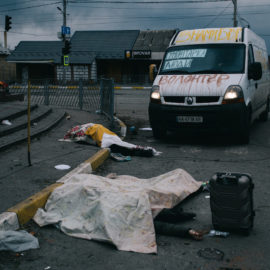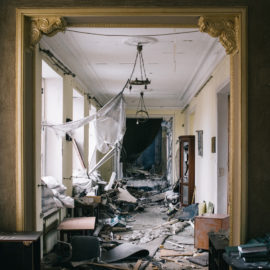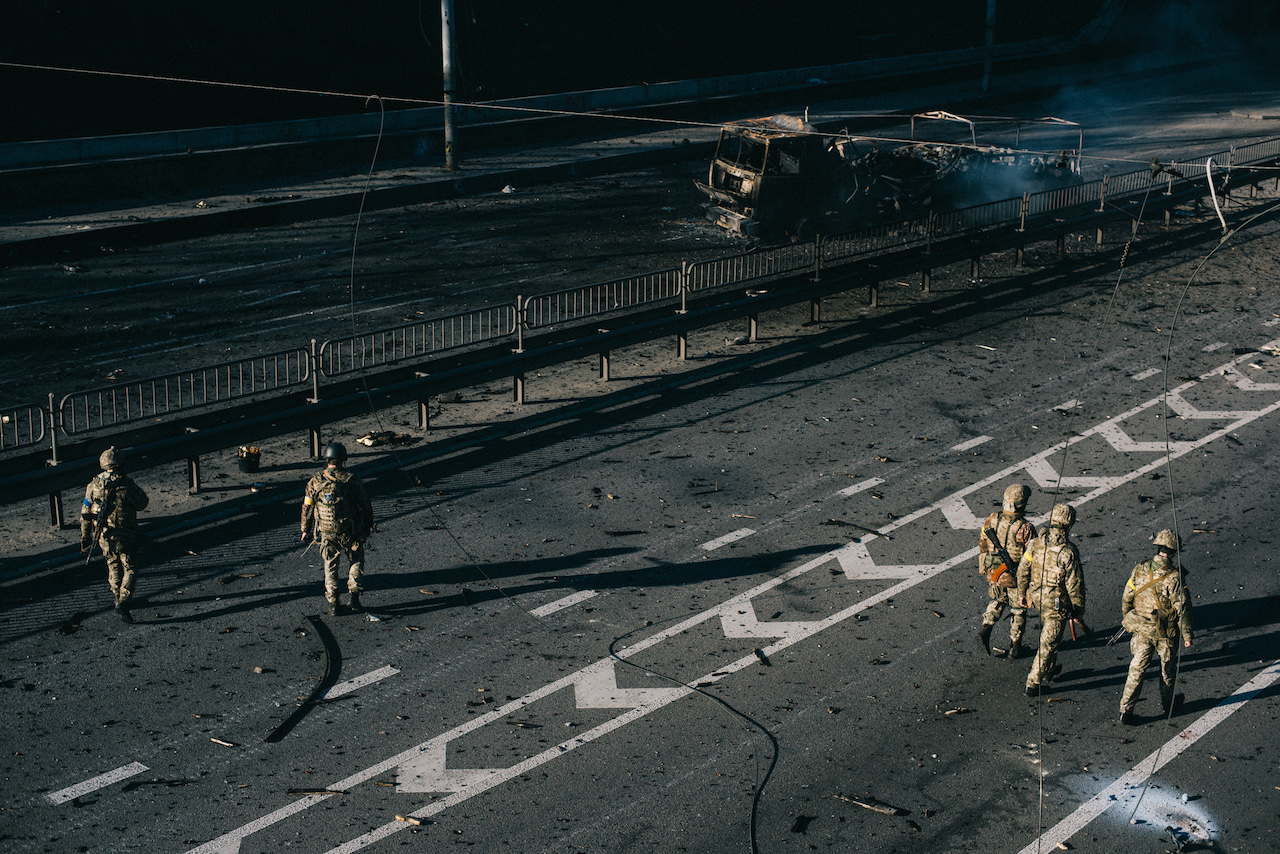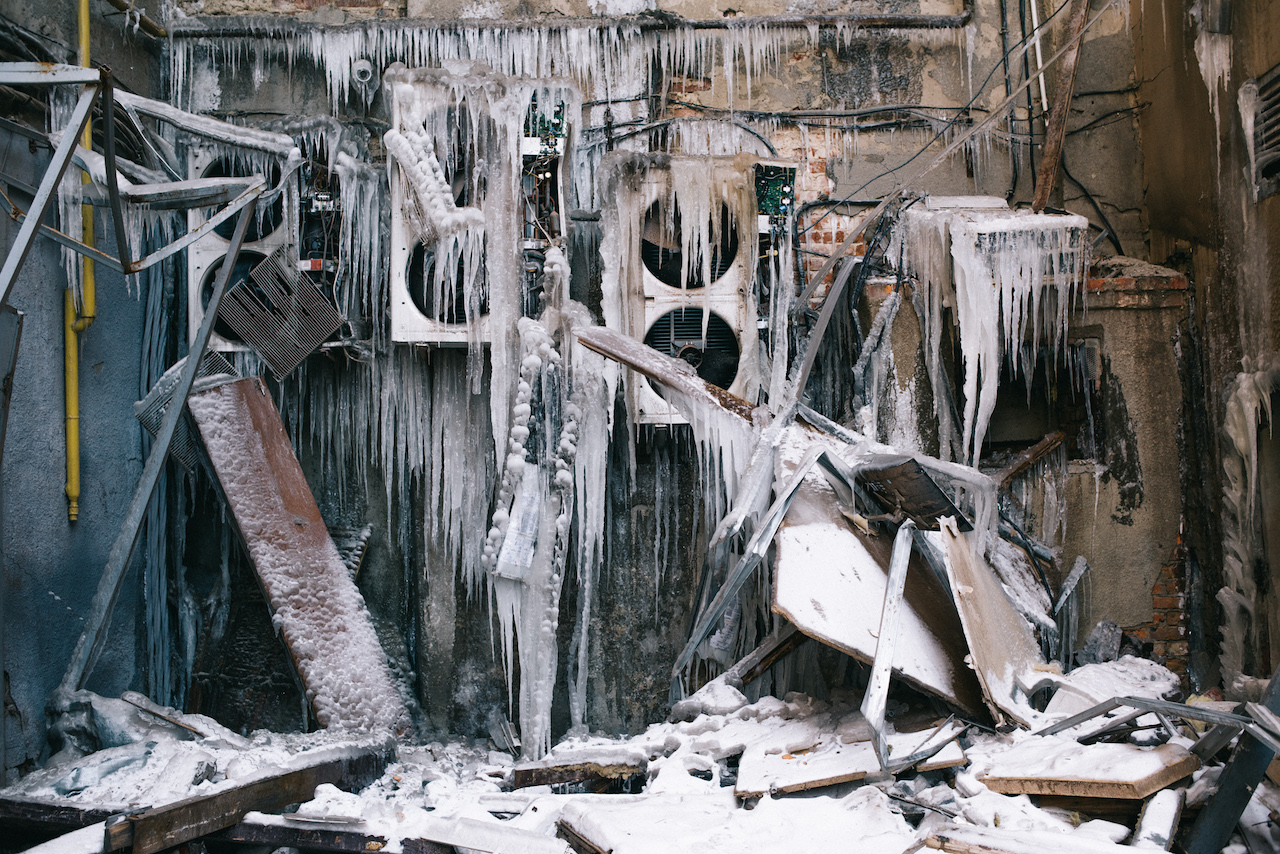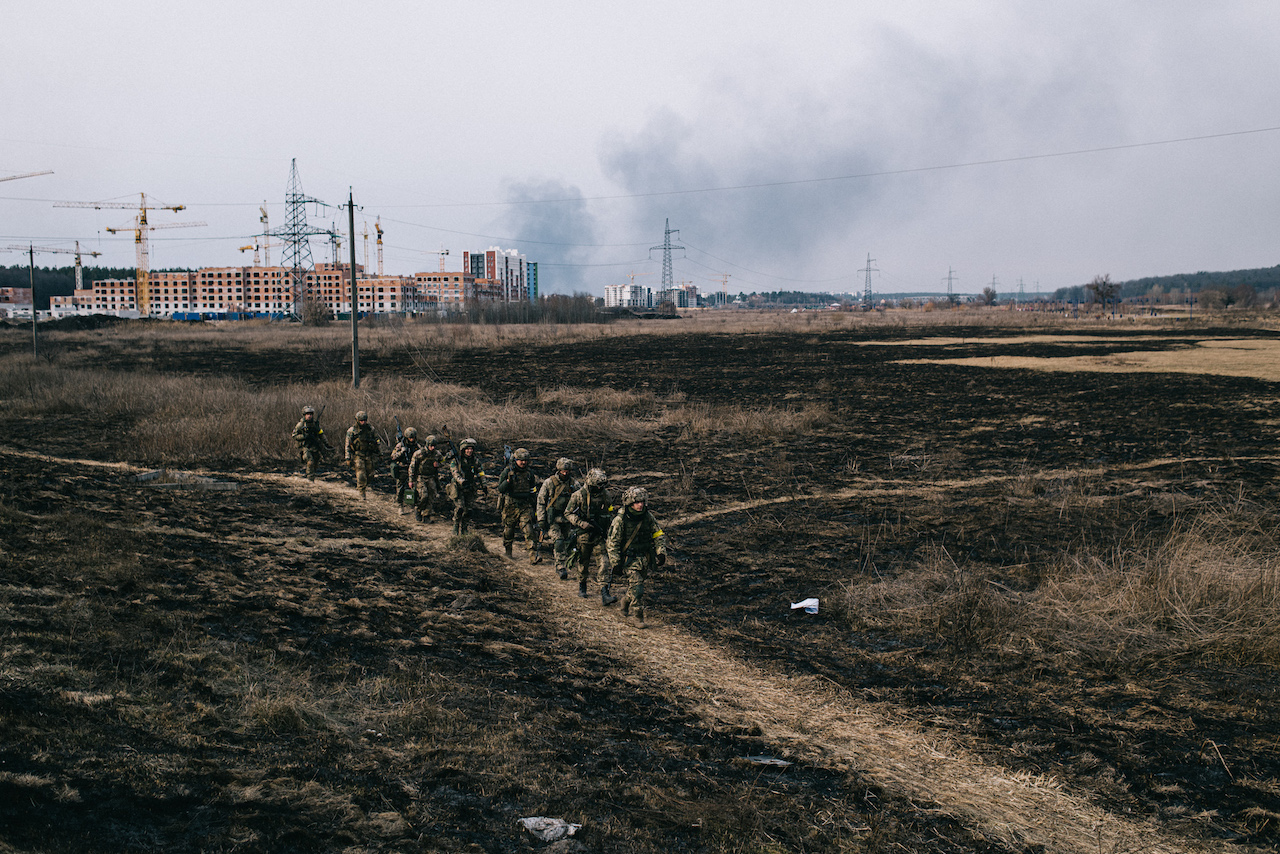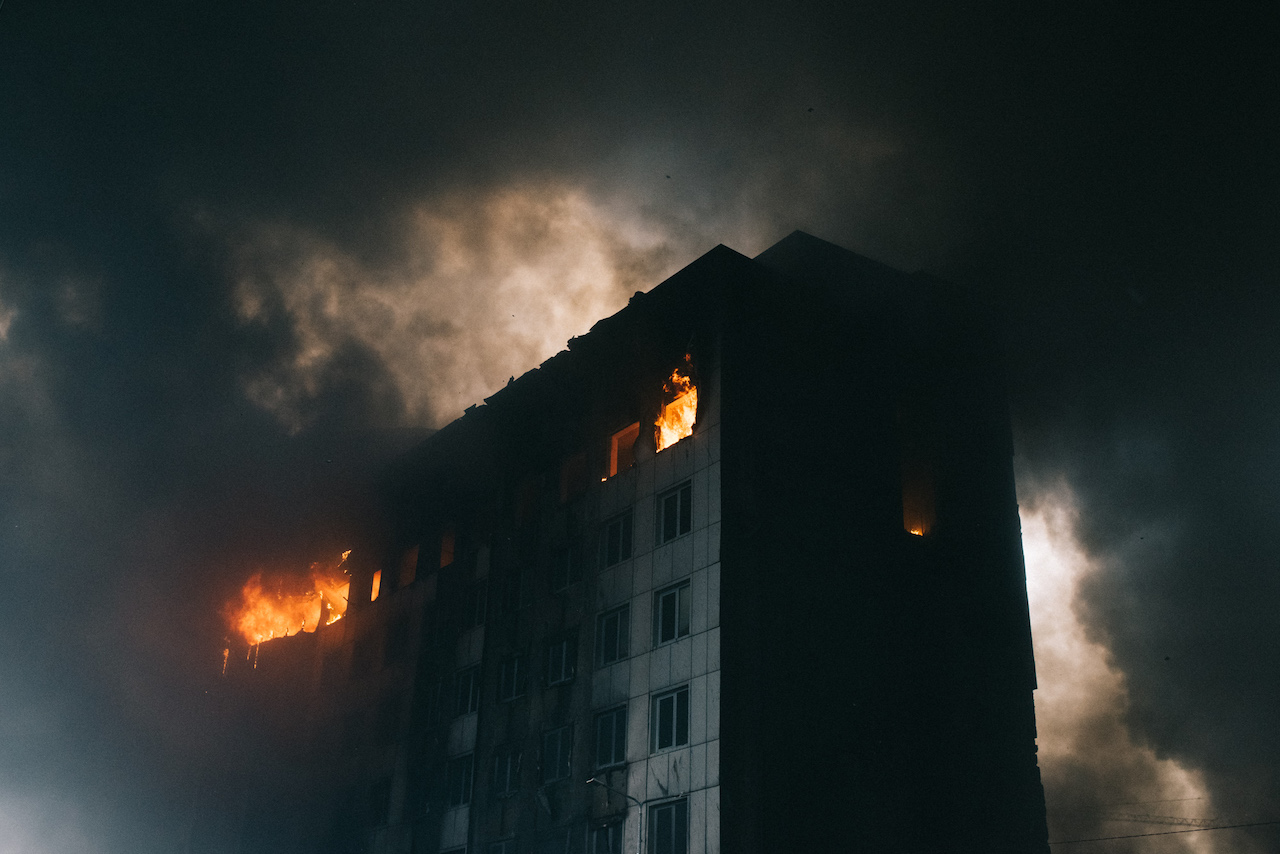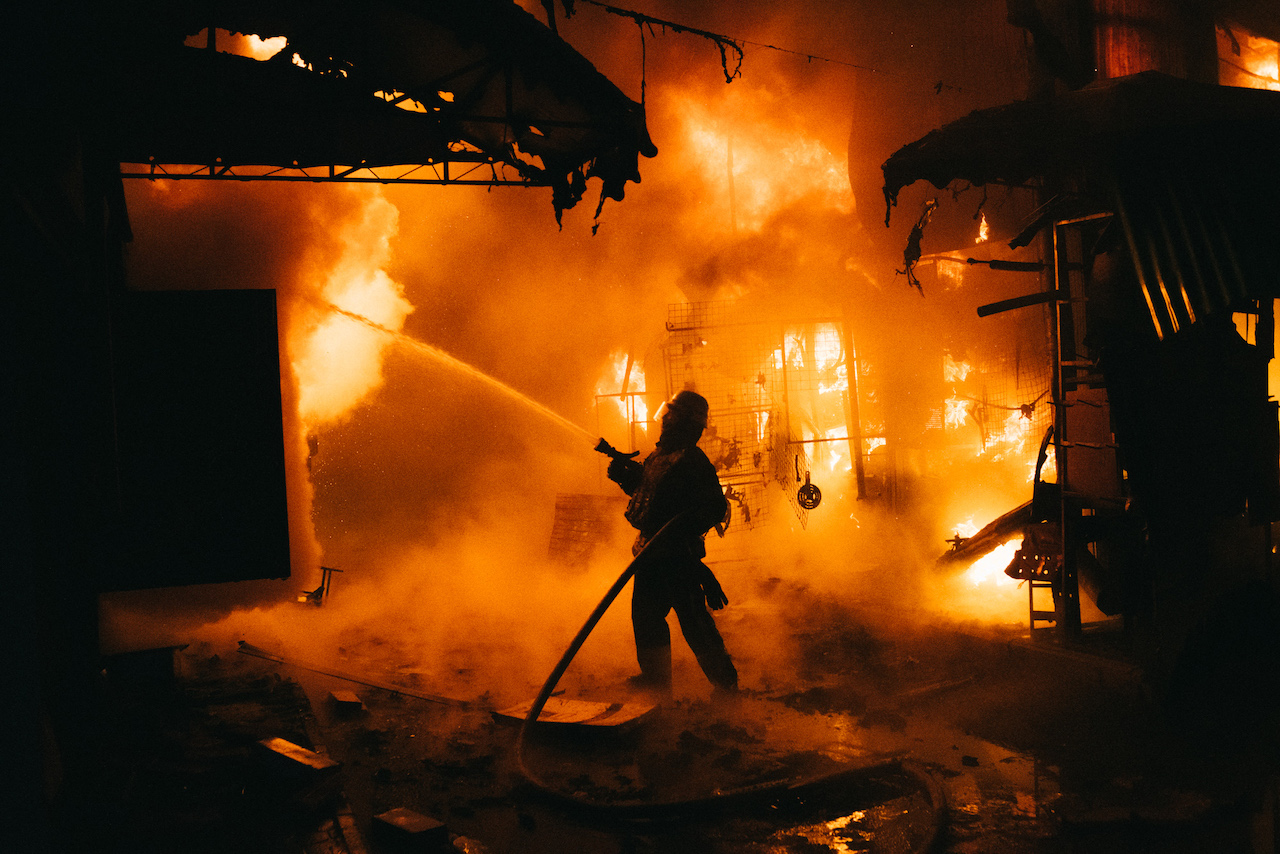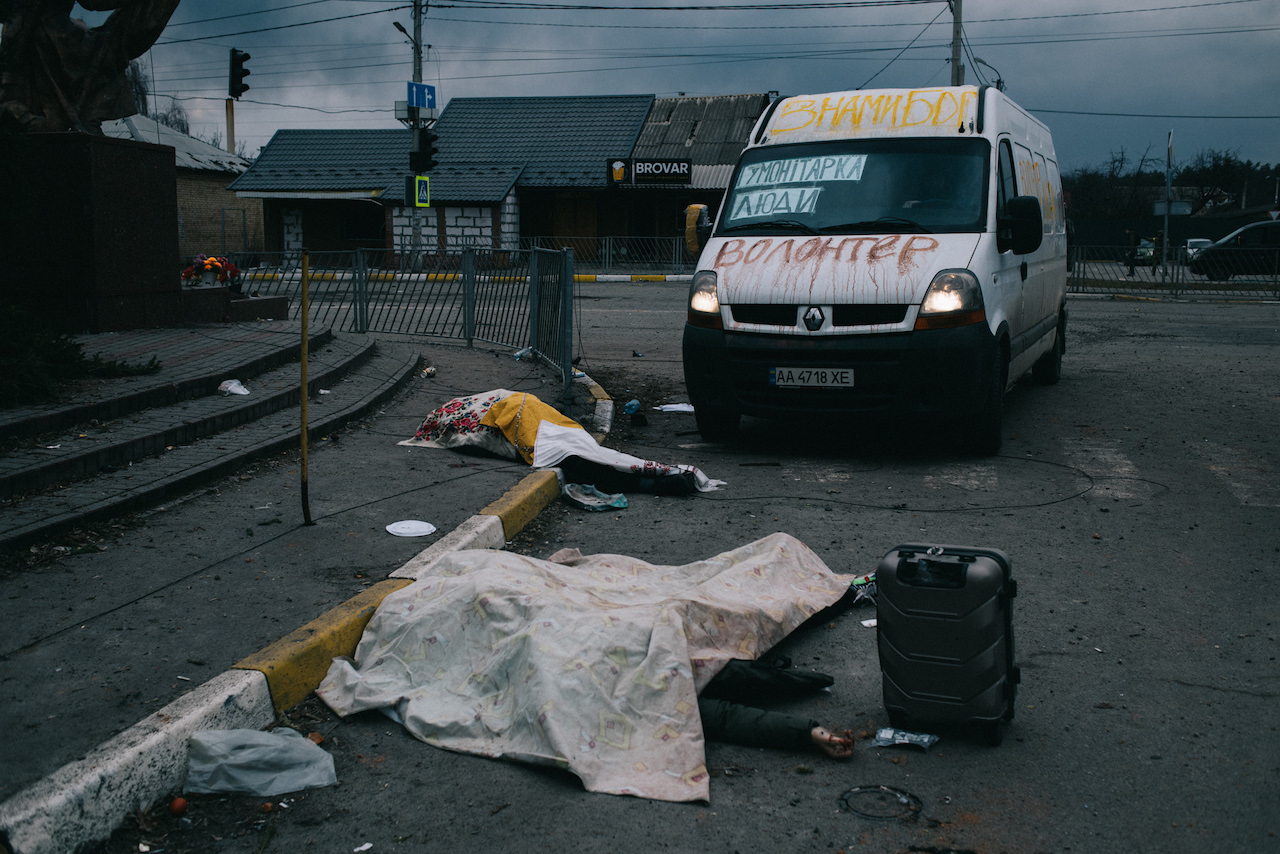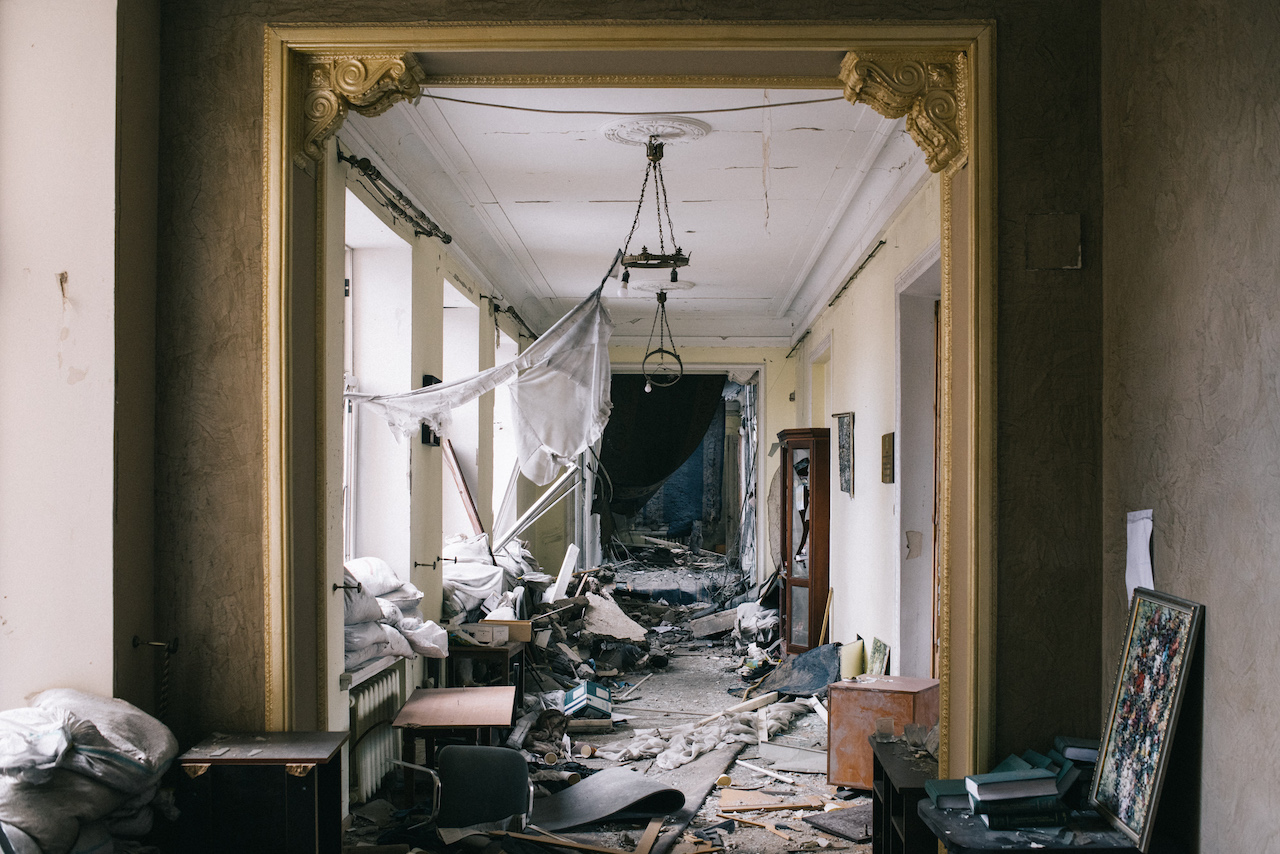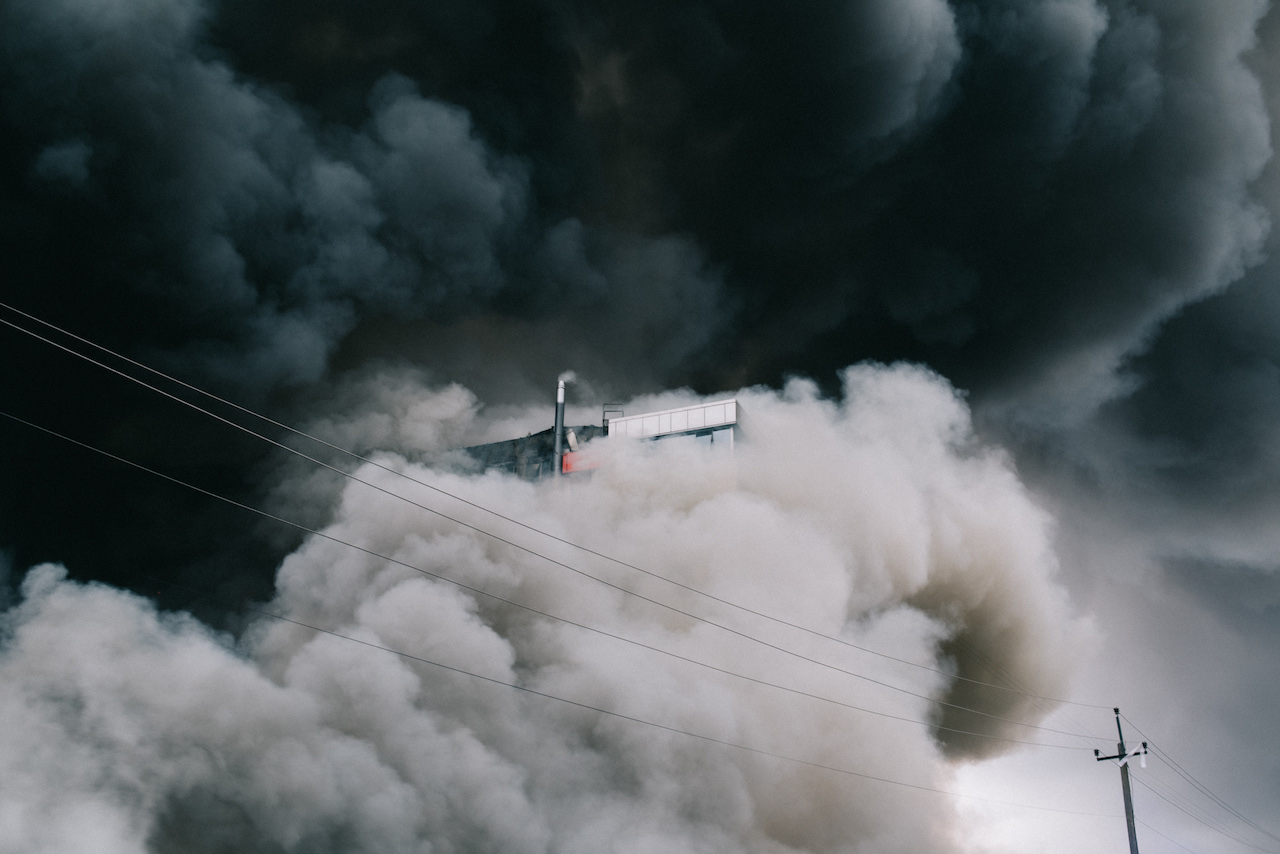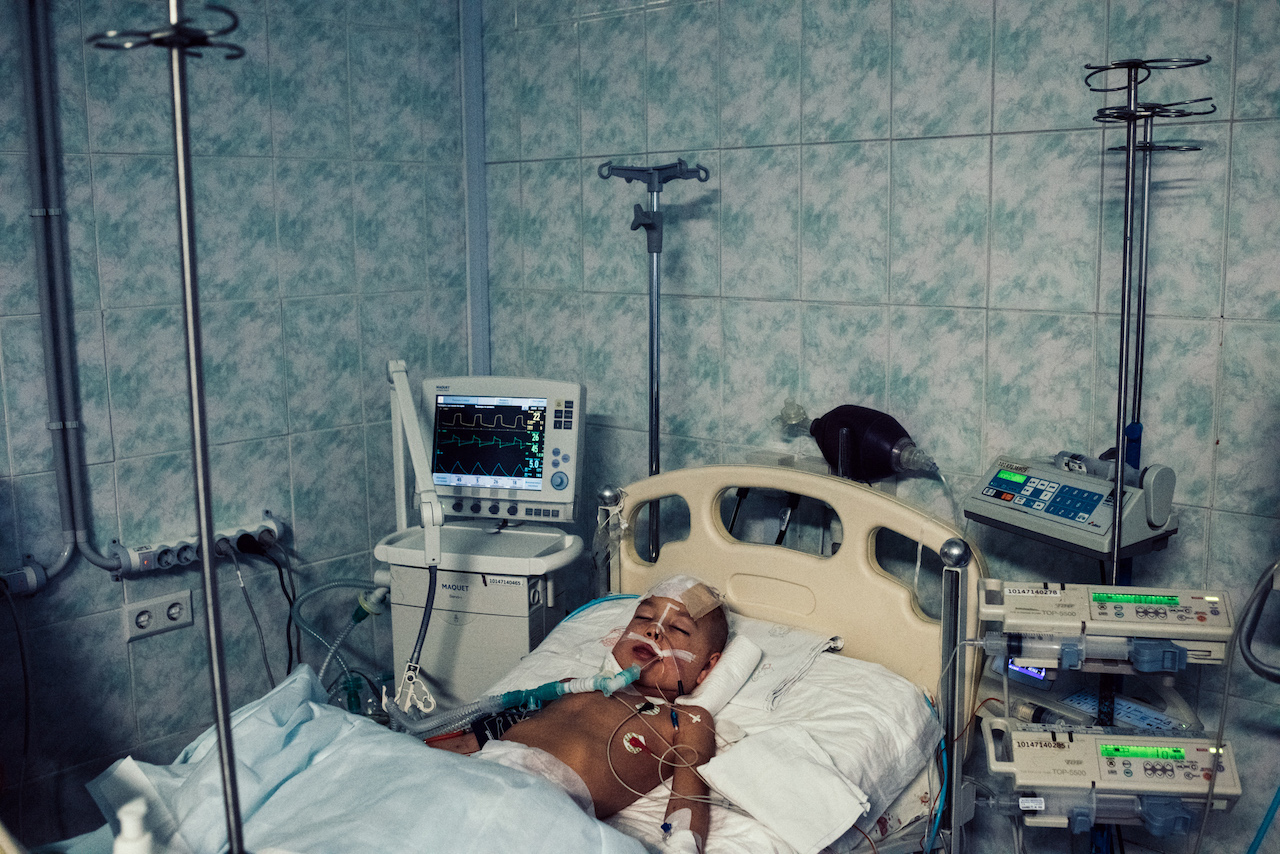For the Record: Maxim Dondyuk on truth, history and time in Ukraine
Evacuation of civilians from Irpin town, through a bridge destroyed by shelling. The bridge was destroyed by the Armed Forces of Ukraine to prevent the enemy from reaching Kyiv. On this day at 10 am women, children and the elderly were supposed to be evacuated from the town by trains, but the enemy blew up the railroad tracks, and so people were asked to move to another place, from where they should be picked up by buses for transportation to the Kyiv railway station. Irpin town, Kyiv region, Ukraine, 05.03.2022. © Maxim Dondyuk.
Source:
